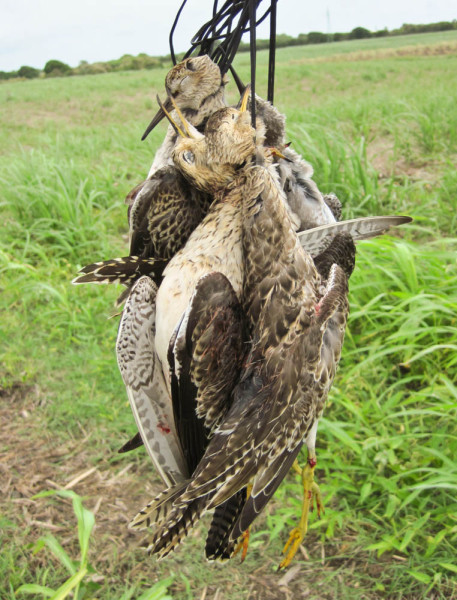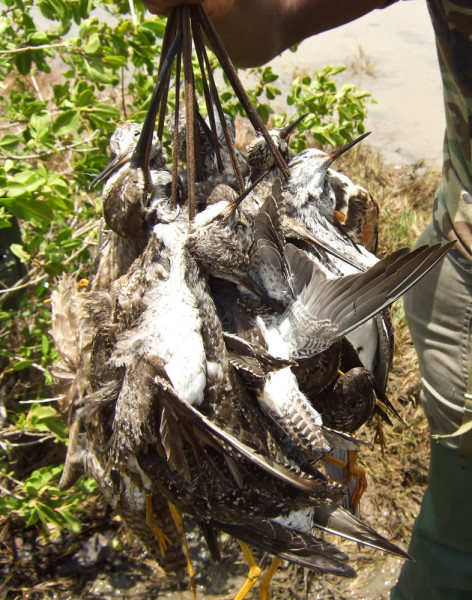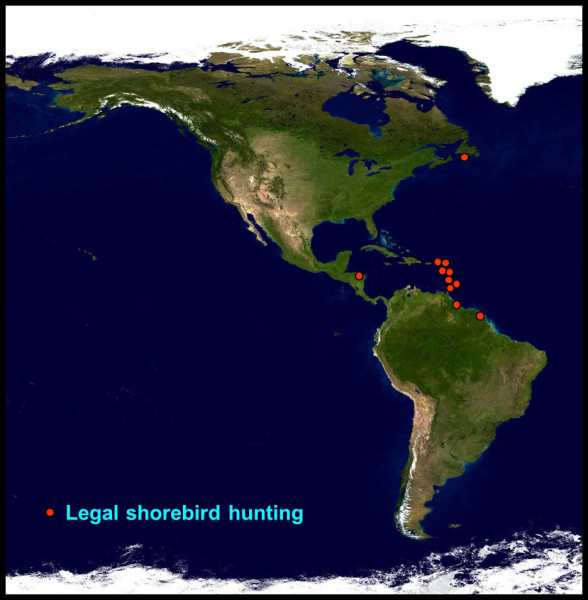Assessment of shorebird hunting policies published

Grace Still at Tidewater Research Station June 24, 2016
June 27, 2016Yellow-crowned night herons adjust to changing climate – continued
June 28, 2016One of the greatest challenges in managing migratory birds is that they exist within a legal quandary. As a recognized principle of international law, states have sovereign rights over all wild animals that fall within their jurisdictional boundaries but no jurisdiction over animals outside of these boundaries. The practical result of this principle is that animals that migrate from one jurisdiction to another are subject, in succession, to the sovereign rights and policies of all states along their migration route. According to conventional international law, there is nothing to prevent a jurisdiction from overexploiting a migratory species to the point of extinction while other jurisdictions expend considerable resources to protect it. Because a migratory population represents a single biological unit, cooperation among range states is critical to successful management.

A bag of upland sandpipers taken in a plowed field on Guadeloupe after a tropical storm. Photo by Anthony Levesque.
Shorebirds are among the bird groups of highest conservation concern in the world with three times as many species declining as increasing. In recent years, unregulated hunting has been identified as a possible driver of declines particularly within the Western Atlantic and East Asia-Australian Flyways. A significant barrier to progress toward holistic management is that we currently have no comprehensive overview of the patchwork of policies that regulate shorebird hunting across the Western Hemisphere.
In 2015 with funding from the U.S. Fish and Wildlife Service, CCB conducted a comprehensive assessment of hunting policies pertaining to shorebirds for the 57 jurisdictions within the Western Hemisphere. The assessment (Watts and Turrin 2016) was recently published in “Wader Study” the international journal devoted to shorebird ecology and conservation. We focused on participation in international treaties and the existence and terms of domestic legislation with respect to the subsistence, commercial and sport hunting of shorebirds.

A bag of 9 yellowlegs and 1 whimbrel taken on Guadeloupe. Large shorebirds such as the lesser yellowleg appear to shoulder the brunt of the hunting pressure throughout the Lesser Antilles and northern South America. Photo by Anthony Levesque.
Most (91.2%) jurisdictions fall into two policy categories, including those that protect all or nearly all (>90%) and those that protect very few (<10%) migratory shorebird species. The former includes 39 (68.4%) jurisdictions, 29 of which have complete prohibitions on shorebird hunting. One of the most interesting findings of the study was that ten of 11 jurisdictions where sport hunting of shorebirds is legal and practiced are exclusive to the Atlantic Flyway. Shorebird hunting jurisdictions are concentrated within the Lesser Antilles where hunters capitalize on waves of shorebirds that are “put down” on the islands by tropical storms in the late summer and early fall period.

Map of the Western Hemisphere highlighting jurisdictions with hunting policies that currently allow the harvest of most shorebird species. Legal hunting is currently concentrated within the Lesser Antilles.
The presumptive objective of hunting policy is to ensure the future health of hunted populations by limiting take to or below the limits of what populations are capable of withstanding. An immediate conservation priority for migratory shorebirds within the Western Hemisphere is to make policy adjustments that will prevent the collective harvest from exceeding sustainable limits. A recent paper (Watts et al. 2015) published in Wader Study estimates sustainable mortality limits for shorebird populations within the Western Atlantic Flyway. Estimates of sustainable mortality limits in combination with the recent assessment of current policies points the way forward.
Written by Bryan Watts | bdwatt@wm.edu | (757) 221-2247
June 27, 2016



